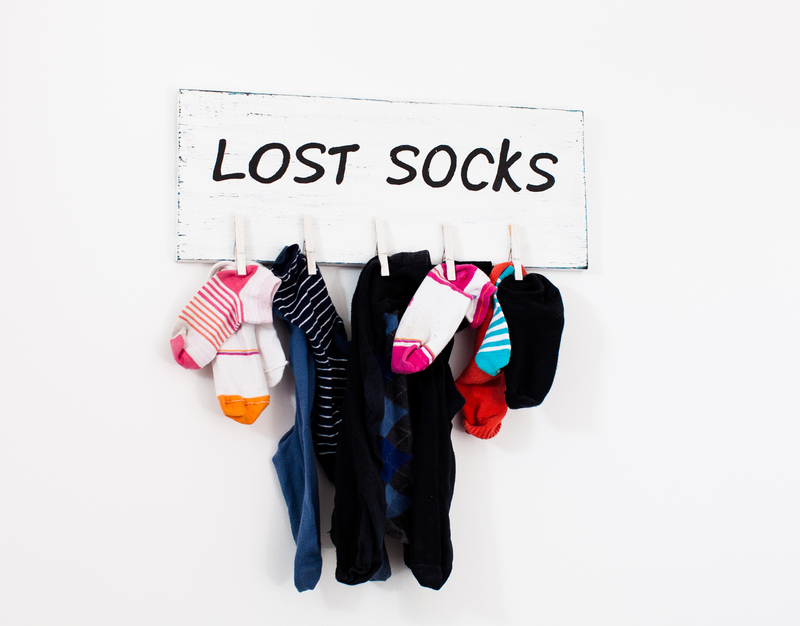The Ultimate Guide to Keeping Your Bathroom Mold-Free
Posted on 01/06/2025
The Ultimate Guide to Keeping Your Bathroom Mold-Free
Imagine stepping into your bathroom and seeing nothing but sparkling clean surfaces, fresh air, and zero signs of mold. A mold-free bathroom isn't just a dream--it's entirely achievable! In this comprehensive guide, we'll unveil expert tips, maintenance routines, and preventative measures to help you maintain a pristine and mold-free bathroom environment for years to come.

Why Is Preventing Bathroom Mold So Important?
Mold isn't just unsightly; it's also a potential health hazard. Black mold, in particular, releases spores that can trigger allergies, asthma, and other respiratory problems. Even less-dangerous molds compromise indoor air quality and can lead to expensive damage to your home's structure.
- Health Risks: Allergens, respiratory problems, and infections
- Structural Damage: Warped wood, damaged drywall, and peeling paint
- Unpleasant Odors: Persistent musty smells in your bathroom
- Reduced Home Value: Mold can deter buyers and lower property value
Understanding the reasons behind bathroom mold will help you take the right actions to stop it before it starts.
Understanding What Causes Bathroom Mold
Mold thrives in warm, moist environments--and bathrooms provide the perfect breeding ground. Here's why:
- High Humidity: Showers, baths, and poor ventilation trap moisture.
- Poor Air Circulation: Enclosed spaces slow drying times.
- Leaks: Dripping faucets, toilets, and hidden pipe leaks create perpetual damp spots.
- Neglected Cleaning: Soap scum and residue give mold a place to grow.
The combination of these factors makes keeping your bathroom mold-free a necessary part of household maintenance.
Practical Steps to Prevent Bathroom Mold
Prevention is easier and much more effective than removal. Follow these essential steps:
1. Improve Ventilation
Good airflow is the key to preventing moisture buildup:
- Install an exhaust fan: Make sure your bathroom's fan effectively pulls humid air outside. Let it run for at least 20 minutes after showers.
- Open windows: Fresh air speeds up drying and prevents mold growth.
- Leave doors open: Letting the bathroom door drift open after use keeps the space airy.
2. Control Humidity
- Use a dehumidifier: Especially useful if your bathroom doesn't have ventilation fan access or windows.
- Monitor humidity levels: Keep levels below 50% with a portable humidity meter.
3. Address Leaks Immediately
- Inspect plumbing: Check under sinks, around toilets, and behind bathtubs for leaks or drips.
- Seal gaps: Use waterproof caulk around tubs, sinks, and showers.
4. Regular Cleaning Routine
Routine cleaning removes soap scum and bacteria, depriving mold of food sources.
- Scrub surfaces weekly: Clean tiles, grout, tub, sink, and shower walls with a mold-killing bathroom cleaner.
- Don't forget corners and crevices: Use a toothbrush for hard-to-reach spots.
- Clean shower curtains and liners: Wash or replace them regularly.
5. Dry Bathroom Surfaces
- Squeegee shower walls: Use a squeegee or towel after every shower.
- Wipe down sinks and counters: Quickly mop up standing water after use.
- Hang towels and bath mats: Let them dry completely between uses; don't leave them bundled up on the floor.
Best Products for a Mold-Free Bathroom
Today's market offers a variety of mold-resistant bathroom products. These can make a big difference!
- Mold-resistant paint: Apply it to bathroom walls and ceilings as a proactive barrier.
- Mildew-resistant shower curtains: Choose curtains with anti-mold coatings.
- Grout sealer: Seals porous grout and prevents mold from taking hold.
- Moisture-absorbing products: Use silica gel packs or special dehumidifying containers for small bathrooms.
How to Spot Early Signs of Bathroom Mold
Detecting mold growth in the bathroom early ensures swift, simple remediation. Be alert for:
- Visible Spots: Black, green, brown, pink, or white fuzz or stains, often in grout lines or caulking
- Musty Smell: A persistent damp or earthy odor
- Peeling Paint or Wallpaper: Indicates underlying moisture and potential mold between walls
- Condensation: Frequent, persistent condensation is a warning sign
If you notice these warning signs, act quickly to address the source of moisture and clean the area thoroughly.
Safe Steps for Removing Existing Bathroom Mold
Already found some mold? Remove it as soon as possible! For small patches of mold on tile, grout, or caulk, follow these steps:
- Protect Yourself: Wear gloves, a mask, and goggles to avoid contact with mold spores.
- Ventilate: Open windows and use fans to disperse spores.
- Scrub with Cleaner: Use a non-ammonia soap or a commercial bathroom mold remover. Apply with a sturdy brush.
- Use Hydrogen Peroxide or Vinegar: After scrubbing, spray a 3% hydrogen peroxide solution (or undiluted white vinegar) and let it sit for 10 minutes before rinsing.
- Dry Completely: Use a dry towel or fan to ensure the cleaned area is moisture-free.
For extensive mold infestations, especially those behind walls or in HVAC vents, consult a professional mold remediation specialist.
Maintaining a Mold-Free Bathroom Over Time
Consistency is key to long-term bathroom mold prevention. Follow these expert maintenance routines:
- Monthly Inspections: Check for leaks, peeling paint, and discoloration. Inspect problem areas--behind the toilet, under sinks, and around the tub or shower.
- Annual Upkeep: Reseal grout and caulking annually. Replace old or deteriorating materials with mold-resistant options.
- Deep Cleaning: Dedicated time for a deep clean prevents soap and product buildup, eliminating easy food sources for mold.
Frequently Asked Questions About Bathroom Mold
How quickly can mold form in a bathroom?
Mold can begin growing on damp surfaces within 24 to 48 hours. That's why prompt drying and good cleaning habits are so important.
What's the most effective way to keep a shower mold-free?
Daily maintenance is your best friend. Use a shower squeegee, keep your shower curtain or door open to dry, and ensure proper ventilation after each use.
Are natural cleaning solutions effective against mold?
Yes. Vinegar, hydrogen peroxide, and baking soda are all effective for small patches of surface mold. Avoid mixing chemicals like bleach and ammonia, which can create dangerous fumes.
Should I be worried about mold behind bathroom tiles or walls?
If you notice persistent musty odors, soft spots, or stains that keep returning, it's time for a professional inspection. Hidden mold poses serious health and structural risks.
Can I paint over mold?
Never paint over mold directly. The fungus will continue to grow and likely return to the surface. Always clean and remediate mold before painting--and use a mold-inhibiting primer.

Final Thoughts: A Mold-Free Bathroom is a Healthy Bathroom
Keeping your bathroom free from mold isn't a one-time task--it's about adopting smart habits and using effective products to combat moisture and bacteria. By ensuring adequate ventilation, addressing leaks, sticking to a regular cleaning schedule, and using mold-resistant materials, you'll set yourself up for fresh, healthy, and mold-free bathrooms for many years to come.
Ready to enjoy a mold-free bathroom experience? Start today, and remember: a proactive approach is your best defense against stubborn bathroom mold!
Summary: Essential Steps for a Mold-Free Bathroom
- Ventilate: Always use fans and open windows after bathing or showering.
- Monitor Moisture: Keep the air and surfaces dry by wiping down after use and fixing leaks immediately.
- Regular Cleaning: Weekly cleaning of all surfaces with mold-fighting products.
- Embrace Preventative Products: Use mold-resistant paint, grout, and accessories.
- Inspect Often: Pay attention to early signs of mold for swift removal and peace of mind.
Stay vigilant, stay dry, and keep your bathroom mold-free!




